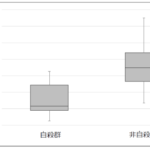2022-11-11 ジョージア工科大学

This proximal tubule organoid is 30 days old, and will survive at least another 60 days. The 90-days is a record for a drop culture of any kind.
チューブロイドは、腎臓を研究するための特別なオルガノイドである。ドナーの腎臓細胞から育てられたチューブロイドは、ネフロンを構成する細胞から作られる。腎臓は、ネフロンと呼ばれる多細胞のろ過装置でできており、すべてのネフロンには長い尿細管があります。そのため、チューブロイドと呼ばれる。
このインサイドアウト型のオルガノイドには、長寿命というおまけもついている。つまり、チューブロイドは90日以上、滴下培養で維持されるのだ。
<関連情報>
- https://research.gatech.edu/long-lived-inverted-organoids-offer-better-glimpse-kidney-disease
- https://www.sciencedirect.com/science/article/abs/pii/S0142961222004689?via%3Dihub
長寿命化した幾何学的に反転した近位尿細管オルガノイド Extended longevity geometrically-inverted proximal tubule organoids
Eric Parigoris,Ji-HoonLee,Amy Yunfan Liu,Xueying Zhao,Shuichi Takayama
Biomaterials Available online: 3 October 2022
DOI:https://doi.org/10.1016/j.biomaterials.2022.121828
Abstract
This study reports the cellular self-organization of primary human renal proximal tubule epithelial cells (RPTECs) around a minimal Matrigel scaffold to produce basal-in and apical-out proximal tubule organoids (tubuloids). These tubuloids are produced and maintained in hanging drop cultures for 90+ days, the longest such culture of any kind reported to date. The tubuloids upregulate maturity markers, such as aquaporin-1 (AQP1) and megalin (LRP2), and exhibit less mesenchymal and proliferation markers, such as vimentin and Ki67, compared to 2D cultures. They also experience changes over time as revealed by a comparison of gene expression patterns of cells in 2D culture and in day 31 and day 67 tubuloids. Gene expression analysis and immunohistochemistry reveal an increase in the expression of megalin, an endocytic receptor that can directly bind and uptake protein or potentially assist protein uptake. The tubuloids, including day 90 tubuloids, uptake fluorescent albumin and reveal punctate fluorescent patterns, suggesting functional endocytic uptake through these receptors. Furthermore, the tubuloids release kidney injury molecule-1 (KIM-1), a common biomarker for kidney injury, when exposed to albumin in both dose- and time-dependent manners. While this study focuses on potential applications for modeling proteinuric kidney disease, the tubuloids may have broad utility for studies where apical proximal tubule cell access is required.


